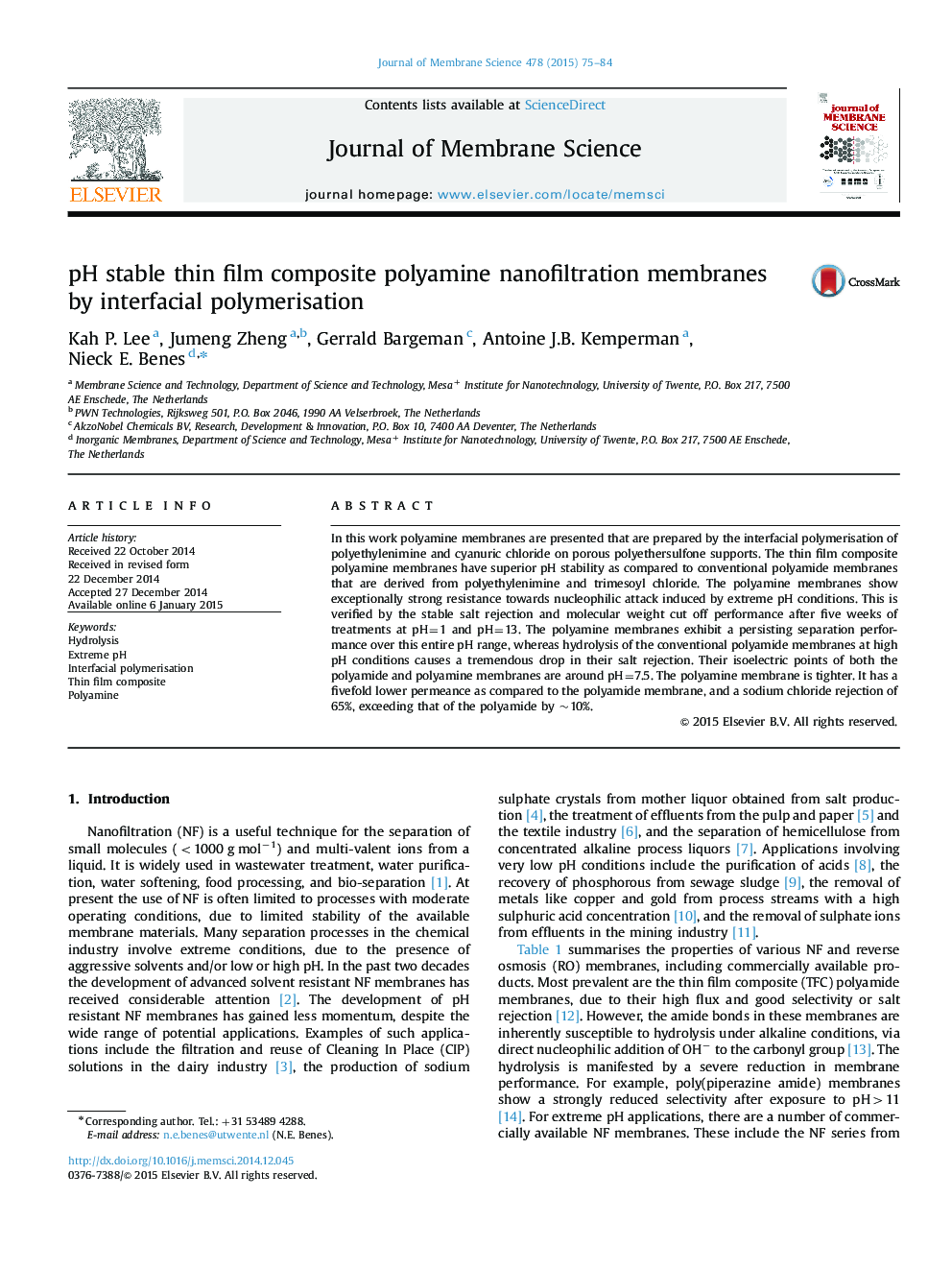| Article ID | Journal | Published Year | Pages | File Type |
|---|---|---|---|---|
| 633204 | Journal of Membrane Science | 2015 | 10 Pages |
•Nanofiltration membranes from hyperbranched polyethylenimine and cyanuric chloride.•Interfacial polymerisation membranes resistant to extremely alkaline conditions.•Resistance to hydrolysis due to the absence of polyamide carbonyl groups.
In this work polyamine membranes are presented that are prepared by the interfacial polymerisation of polyethylenimine and cyanuric chloride on porous polyethersulfone supports. The thin film composite polyamine membranes have superior pH stability as compared to conventional polyamide membranes that are derived from polyethylenimine and trimesoyl chloride. The polyamine membranes show exceptionally strong resistance towards nucleophilic attack induced by extreme pH conditions. This is verified by the stable salt rejection and molecular weight cut off performance after five weeks of treatments at pH=1 and pH=13. The polyamine membranes exhibit a persisting separation performance over this entire pH range, whereas hydrolysis of the conventional polyamide membranes at high pH conditions causes a tremendous drop in their salt rejection. Their isoelectric points of both the polyamide and polyamine membranes are around pH=7.5. The polyamine membrane is tighter. It has a fivefold lower permeance as compared to the polyamide membrane, and a sodium chloride rejection of 65%, exceeding that of the polyamide by ~10%.
Graphical abstractFigure optionsDownload full-size imageDownload high-quality image (263 K)Download as PowerPoint slide
